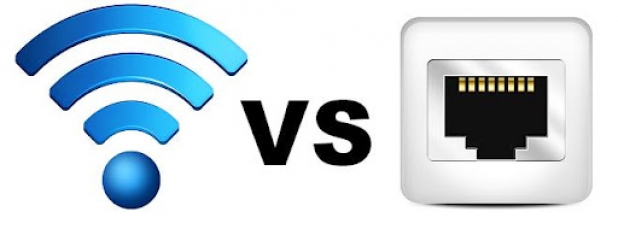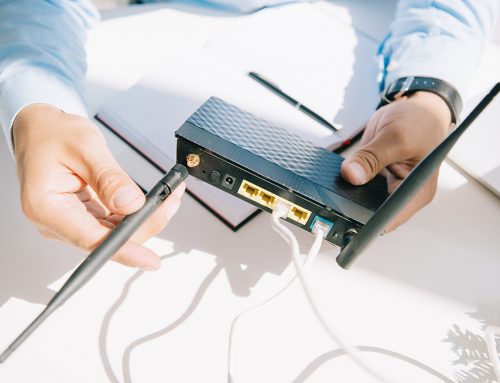Computer networks for the home and small business can be built using either wired or wireless technology. Wired Ethernet has been the traditional choice in homes, but Wi-Fi and other wireless options are gaining ground fast with the increase in use and need of portable devices, both at homes and at offices.
Comparison of wired and wireless networking in five key areas:
- Ease of Installation: A wired home network is when you connect your computer or other compatible device to your Super Hub with an Ethernet cable. In wired broadband, Ethernet cables must be run from each computer to another computer or to the central device; thus making it time-consuming and messy. Whereas, a wireless network is when your computer (or other wireless compatible devices like laptop, mobiles, etc.) is connected to your Super Hub without any wires. It is easy to set up and no wires need to be run through buildings, over ground or underground.
- Cost: Wireless communications networks are less expensive to install and maintain than equivalent wired systems. Not only do you have to pay the per-foot costs of the cable itself, you need to invest time and labour to plan wiring routes and put the wire in place. Any changes to the wiring plan add to these costs. Although even wireless systems need some cabling, the amount involved is a small fraction of that needed for wired equipment.
- Security: It is true that no computer network is completely secure. In case of wired network, there is less risk of others being able to access your broadband connection. Whereas, in Wireless broadband, unauthorised users might try to use your connection; though wireless broadband can protect their data through the Wired Equivalent Privacy (WEP) encryption standard, which makes wireless communications reasonably as safe as wired ones in homes.
- Flexibility: Want to check your emails on your laptop in the garden? Want to tell your friends what you’ve been up to on Facebook? No problem, you can do that with wireless broadband as the devices have no cables to connect. Whereas, in case of wired connection, you must physically connect a device to a wall jack for wired communications to work; this becomes a problem if the jack is in an inconvenient location or if the cable isn’t long enough to reach the jack.
- Connectivity: Wired network supports fewer connections than a wireless (usually just four, instead of more than 20). But in case of wireless network, you can connect more devices than via a wired connection. And because you can connect lots of different devices (laptops, mobiles, tabs, etc.) to the web, everyone in your home can go online at the same time.
- Productivity: In wired Internet connections or dial-up connectivity, Workers, students, professionals and others are constrained. Whereas, Wireless Internet connectivity options ensure that work and assignments can be completed anywhere via laptops, mobiles or any wireless devices. Improved communications leads to faster transfer of information within businesses and between partners/customers; thus enhance overall productivity of all concerned.
Though the best thing about a wired connection is the reliability and speed it gives you, but High costs, difficult installations, copper theft and more are driving operators to consider alternatives to wired solutions. In many industries, including the military, there is evidence that wireless data radios are a viable alternative. These technologies provide long-range, reliable and affordable solutions. Wireless technology can offer businesses more flexible and inexpensive ways to send and receive data.





